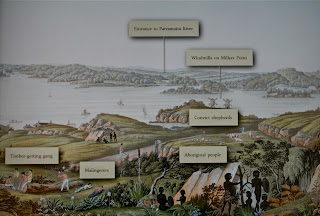One Family History: 220 Years in Australia is the latest edition to the Irish Wattle stable. Meticulously researched by Neil Hall and Barbara Hall, One Family History is the story of a family whose first Australian ancestor was sent on the Second Fleet, arriving in Sydney in June 1790. The book tells of other arrivals, convicts and free, up to 1825; when all those from whom the current family are descended had arrived in the colony.
The family names Hall and Readford occur again and again throughout this history: but there were other family names too. In placing this family history in a broad social and historical context the book provides an interesting, detailed and easy to read story of one family in Australia. This is a family history that is contemporaneous with the history of Australia.
Unique facts and much evidence not previously published and certainly not readily available are presented in this publication. The book provides an example of good practice in family history writing. It has been thoroughly researched, it is well written and provides detailed stories and insights into the lives of convicts, their 19th-century descendants and the more recent generations, including those still living.
One Family History: 200 Years in Australia is available for purchase by contacting Irish Wattle.




















+-+1870+(19+Apr).jpg)


















